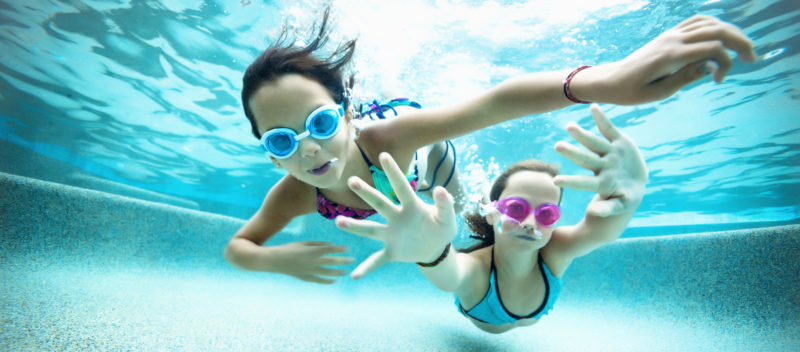In these dog days of summer, you’ve probably been spending plenty of time at the pool. Keep on swimming with the kids — it’s great exercise for them and you. To make sure it stays fun for everyone, take a quick read about swimmer’s ear, a common summertime ailment.
Swimmer’s ear is an infection of the external ear canal, the tube that runs from the outer ear to the middle ear. You might hear a doctor call it otitis externa. It occurs when there’s a lot of wetness or moisture in the ear, which turns the ear into a breeding ground for bacteria.
Swimmer’s ear can occur any time of the year. We see it more often in the summer since kids are in and out of the pool so much. But it can also come about after showering or bathing.
Here are the most common questions I hear about swimmer’s ear, along with some easy tips for preventing it.
What are the symptoms of swimmer’s ear?
With this infection, the ear canal is swollen which can cause quite a bit of pain. Your child might start complaining about his ear hurting or wince when he takes off his shirt and it brushes his ear. Or he may not be able to hear as well as usual out of one ear. Other symptoms include discharge coming out of the ear or the ear canal itching.
When should I visit my pediatrician?
A telltale sign of swimmer’s ear is pain when you pull up on the ear or push in on the ear. If your child experiences this, or any of the symptoms above — ear discharge, itchy ear canal, or decreased hearing — call your pediatrician and have it checked out.
What are the treatments for swimmer’s ear?
Swimmer’s ear is a bacterial infection that requires an antibiotic for treatment. Therefore, I don’t recommend over-the-counter remedies to treat it. In the office, we prescribe topical antibiotics in the form of drops that you put into the ears. Oftentimes the drops we prescribe contain a combination of medications: antibiotics to fight the infection, and a steroid to help bring the swelling down.
It’s important to note that kids should stay out of the water or should not go under water until treatment is complete and all symptoms have resolved.
Can I do anything to help prevent swimmer’s ear in my child?
Yes, here are several simple steps to help prevent swimmer’s ear:
- Always encourage kids to towel dry their ears after swimming or bathing to get the wetness out.
- Have your child tilt her head to each side to drain water out of the ears. You can even tug on or rotate the ear a bit to encourage drainage.
- Parents, put a blow dryer on the lowest setting and briefly dry the inside of the ear canal.
- For kids who are on swim team, in the pool a lot, or tend to get swimmer’s ear often, try a one-to-one solution of rubbing alcohol and vinegar. Use a dropper to fill both ear canals before and after swimming, and at nighttime. This can prevent bacteria from settling in your child’s ear.
Note: Kids with PE tubes should not use the rubbing alcohol and vinegar solution. - Don’t try to clean wax out of the ears all the time. Earwax is a defense mechanism of the ear canal and can protect against swimmer’s ear.
- Some kids find it helpful to use earplugs and/or swim caps to help prevent swimmer’s ear.
I hope you’re enjoying your summer. Have fun at the pool, and with these tips, may you keep the swimmer’s ear away!






